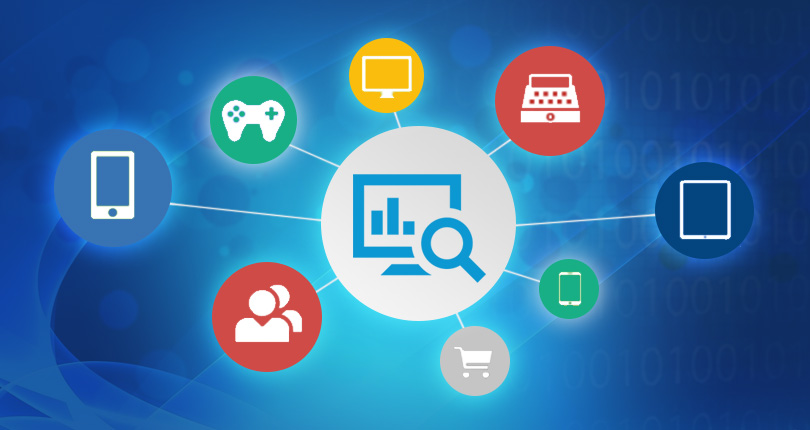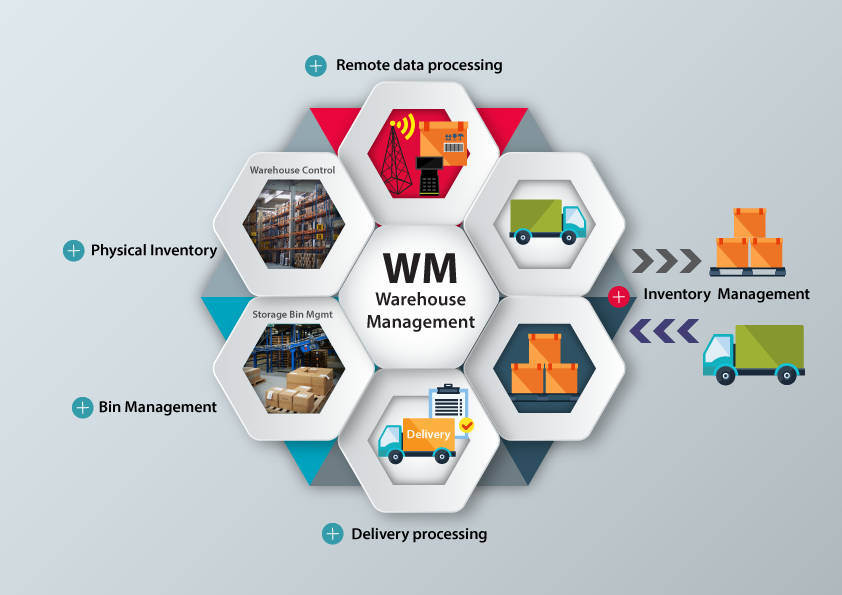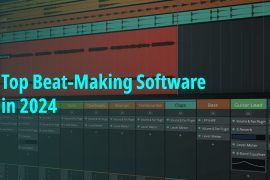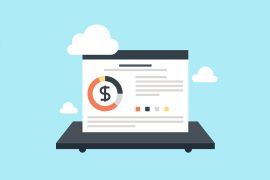Stream Analytics Software continuously monitors and analyses integration data. Users can use these tools to analyze data in transit between applications or via APIs. This enables users to examine both historical events and current events at the same time. Stream analytics is used by businesses to better understand what data users are retrieving and to keep track of endpoints. Users can examine data sent between devices such as smart automobiles, machinery, and home appliances that are part of the internet of things (IoT). To exhibit and map linked devices, several tools include data visualization components. Competitive analysis and big data analytics are two more frequent elements. Although there is some overlap between stream analytics and big data analytics technologies, big data analytics tools aren’t always employed to offer real-time data.
Table of Contents
Highlights of Stream Analytics Software

A product must meet the following criteria to be considered for the Stream Analytics category:
- Real-time monitoring of activities relating to information sharing
- Triggers can be used to notify users of device or network failures.
- Analytical data can be used to make decisions.
Top 5 Stream Analytics Software
Azure Event Hubs
Event Hubs is a simple, reliable, scalable fully managed real-time data intake solution. Build dynamic data pipelines and respond quickly to business challenges by streaming millions of events per second from any source. Using the geo-disaster recovery and geo-replication features, you may keep processing data during an emergency.
Integrate with other Azure services to have access to vital data. Allow existing Apache Kafka clients and apps to communicate with Event Hubs without requiring any code modifications, giving you a managed Kafka experience without the hassle of managing your own clusters. On the same stream, experience real-time data ingestion and micro batching.
What are the advantages of using Event Hubs?
Simple
With only a few clicks, you can create real-time data pipelines. Integrate seamlessly with Azure data services to find answers faster.
Secure
Keep your real-time data safe. CSA STAR, ISO, SOC, GxP, HIPAA, HITRUST, and PCI certifications are all available for Event Hubs.
Scalable
Dynamically adjust throughput according to on your consumption requirements, and only pay for what you use.
With support for common protocols like AMQP, HTTPS, and Apache Kafka®, you can ingest data from anywhere and develop across platforms.
Pricing:
There are no upfront costs.
There are no cancellation costs.
You only have to pay for what you use.
Pros:
- Internally, Azure Event Hub employs Kafka as a service. For consuming the event from your source, you didn’t need to develop a consumer.
- Azure Event Hubs is simple and straightforward. It’s comparable whether you’re migrating from Kafka, and Azure is a terrific alternative for a different but familiar experience. I would absolutely recommend it to someone who is hesitant to try anything new and is afraid to take risks.
- Azure Event Hubs is simple and straightforward. It’s comparable whether you’re migrating from Kafka, and Azure is a terrific alternative for a different but familiar experience. I would absolutely recommend it to someone who is hesitant to try anything new and is afraid to take risks.
Cons:
- Many things are hidden, so if you want a more flexible solution, you’ll need to develop your own function.
- When you need to persist in events for more than a month, the persistence of the events can be a little tricky.
- It’s difficult to catch on to it, especially for those who aren’t familiar with cloud systems. Better documentation would undoubtedly simplify our work.
IBM Streaming Analysis
With IBM® Streams, make sense of your data by translating fast-moving volumes and variety into insight. Streams analyses a wide range of streaming data, including unstructured text, video, audio, geographic, and sensor data, to help businesses detect opportunities and hazards as they arise.
Streams can be used in conjunction with other IBM Cloud Pak® for Data features, which are designed on an open, expandable architecture. Assist data scientists in collaboratively building models to apply to stream flows and in real-time analyzing enormous volumes of data. It’s easier than ever to act on your data and get the actual value.
Features
Development Support
- Solution architects can utilize the rich Eclipse-based visual IDE to visually build applications or use familiar programming languages like JavaTM, Scala, or Python.
lData Connections that are rich
- Data engineers can connect to almost any data source — structured, unstructured, or streaming — and integrate it with Hadoop, Spark, and other data infrastructures.
Visualization and Analysis
- Adaptive stream applications are created using built-in domain analytics such as machine learning, natural language, spatial-temporal, text, acoustics, and more.
Pricing:
For this product or service, IBM Streaming Analytics has not given pricing information.
Pros:
The system’s capacity, adaptability, and scalability are excellent, and it fits the business needs.
The ability to reuse existing code relieves the stress of having to start from scratch each time.
Cons:
Speech-to-text is a little sluggish.
Google Cloud
Google Cloud, which includes G-Suite and GCP, is a platform that offers a dependable and easy-to-use collection of solutions for tackling the toughest challenges in any business. It offers safe storage, integrated data analytics, and sophisticated processing capabilities. Users may create team discussions and work on projects with Google’s G-Suite platform, which includes productivity tools like Google Docs, Hangouts, Calendar, and Drive. G-Suite also gives customers the ability to customize their Gmail accounts.
Physical assets in GCP data centers across the world include computers, hard drives, and other virtual machines that help with resource distribution and provide redundancy in the event of a failure or latency reduction. GCP has managed to bring people into a serverless environment, eliminating the need for any infrastructure, by providing global, regional, and zonal resources.
Features:
Connectors and Stream Analytics
In Java, Python, and SQL, native Dataflow integration offers reliable, expressive, exactly-once event stream processing and integration.
At-Scale In-Order Delivery
Per-key ordering is an optional feature that simplifies stateful application logic without losing horizontal scale—no partitions are required.
Pub/Sub Lite Allows for Cost-Effective Consumption.
Pub/Sub Lite, which complements Pub/Sub, intends to be the cheapest alternative for high-volume event consumption. Pub/Sub Lite provides zonal storage and allows you to regulate capacity.
Pricing:
Google Cloud Console has not provided pricing information for this product or service.
Pros:
Excellent suite with many features for managing your area and inviting others to interact on the same pages you.
The Google Cloud Platform is incredible! It collects all of Google’s amazing apps into one convenient location.
The simplicity with which Google Cloud Platform can be used is fantastic. Creating events and having our employees use the site is simple and straightforward.
Cons:
- Configuration of permissions can be a bit confusing at times.
- In case you have low Internet speed at your workplace, you will surely struggle with this platform.
- Sometimes the security system finds suspicious activity on the server. Alarms always turn out to be false, but it is impossible to use the platform during such failures.
PI System
Through reliable, high-quality operations data, the PI System allows digital transformation. In any place, collect, refine, and send data in real-time. Engineers and operators should be empowered. Analysts and data scientists would be able to do their tasks faster. Encourage new business ventures.
What is the PI System and How Does It Work?
Collect
Collect data in real-time from hundreds of assets, such as legacy, proprietary, remote, mobile, and IIoT devices. The PI System connects you to your data, regardless of where it is stored or what format it is in.
Store
With sub-second resolution, you can store decades of data. To keep key operations running and business insights coming, have fast access to high-fidelity historical, real-time, and predictive data.
Contextualize
By adding intuitive labels and metadata to your data, you may make it more meaningful. Create data hierarchies that mirror your business’s operating and reporting contexts. You don’t just observe a data point when you have context; you see the whole picture.
Visualize and Take Action
Create custom reports and views quickly and easily to keep track of processes and fix problems on the fly. Drill down from high-level summaries to see particular asset issues quickly. To detect patterns and replicate successful practices, compare downtime events and batch datasets.
Integrate, Share, and Enlist the help of others
To derive new insights, and deliver reliable, analysis-ready operational data to analytics tools and machine-learning algorithms. With just a few clicks, you can easily send data to the cloud and begin collaborating with analysts, data scientists, and even partners and service providers outside your organization. It’s simple to achieve operational agility.
Pricing:
For this product or service, the PI System has not given pricing information.
Pros:
- It runs on a standard office desktop, eliminating the need for people to physically travel to remote control rooms to download plant data.
- PI is incredibly user-friendly and scalable, particularly with the new programs. OSIsoft is also excellent at advocating for cybersecurity.
- PI collects data from a variety of machines and equipment, regardless of the original equipment manufacturer, and makes it available to a large user base on-site or off-site as needed.
- It enables us to connect a variety of databases and systems to allow data from many projects to interact and provide the results we require.
Cons:
The High-Availability option for replicating data on the PI server is quite costly. Due to the considerable expense, we were unable to pursue this option at this time.
When plant telemetry readings aren’t available on the PI system, I have to examine the closed-source DCS/PLC database, which is especially important when the data is needed for analysis or failure investigations.
It may be more user-friendly and provide more pre-programmed information.
Stream Feeds
Stream Feeds is an open-source project that allows you to create scalable newsfeeds. Stream allows you to write backups to whichever S3 bucket you desire, giving you the flexibility to switch to an in-house solution at any time. It allows you to create activity streams and talk with others. Some of the largest and most popular applications for feeds and chat use Stream’s simple yet powerful APIs and SDKs.
The majority of popular languages have SDKs available.
Stream is a tech stack tool in the Activity Feeds as a Service area.
Features:
Enterprise Scalability
Teams rely on the Stream technology to scale globally, regardless of load, without affecting the performance or usability of their apps.
Infrastructure for APIs
GO, RocksDB, and Raft was used to create our 9ms average API response time architecture. Build any type of Activity Feed without worrying about scalability.
Feature Complete
Users get everything they expect from a comprehensive activity feed experience, including complete Feed ranking, aggregation, reactions, URL enrichment, follows/unfollows, and real-time updates.
Personalization
To boost discovery and engagement, modify feeds and follow suggestions and recommendations with our customized feed edge rank.
Counted on for Success
Hundreds of teams and over a billion end-users rely on the Stream service to expand reliably regardless of demand.
Pricing:
$0.0050
per SMS (United States)
Pros:
The Stream API was really simple to use and saved us a significant amount of time and money during development. The documentation is simple to follow, and we’ve had little difficulty integrating it into our platform.
Cons:
The constraints for deleting feeds in the API are a little draconian. The dashboard’s “explorer” can be a little unstable at times. Filtering feeds is not currently possible.
Conclusion
Streaming analytics is most beneficial for data sources that deliver little amounts of data (typically in kilobytes) in a continuous flow as they are generated. Learn about Dataflow, a unified stream and batch data processing service from Google Cloud.
Data has traditionally been delivered in batches. Large amounts of data are routinely handled at once, with substantial latency gaps. Every 24 hours, for example, a process could be run. While this is an excellent strategy for dealing with large amounts of data, it is ineffective for time-sensitive data that must be streamed because the data can become stale by the time it is processed.
To find out information about various useful software, check out SaaSworthy!






